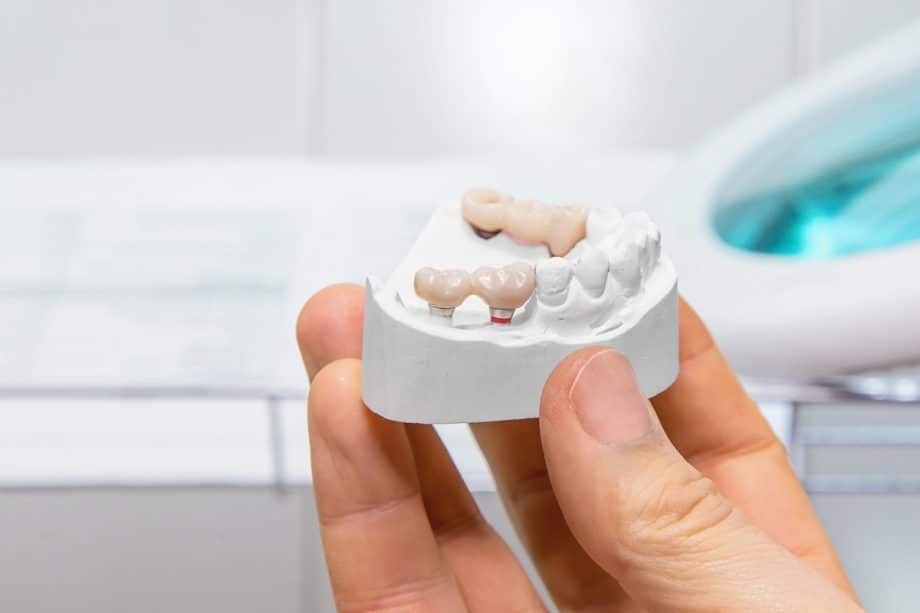A dental bridge is a fixed dental restoration used to replace missing teeth. It functions by connecting at least two natural teeth or implants to help maintain a healthy smile.
What Does a Dental Bridge Do?
A dental bridge comprises two crowns (replacement teeth) and a false tooth (called a pontic) which rests between the two crowns. A dental bridge is similar to a partial denture, except that it's more stable and permanent.
A bridge helps prevent the shifting of existing teeth and changes in your bite pattern. By replacing one or more missing teeth with a dental bridge, you can improve your ability to chew and speak correctly and improve your overall appearance.
Materials Used in Dental Bridges
Dental bridges are made of metal, porcelain, or a combination of the two to replace one or more missing teeth.
The materials used in dental bridges depend on several factors:
- Your age
- Your health history
- Your lifestyle and diet
- The location of your missing tooth
- The number of missing teeth
When is a Dental Bridge Used?
A dental bridge is used to replace one or more missing teeth and restore aesthetic balance to your smile. A bridge can prevent the shifting of remaining teeth, which can lead to other problems such as gum disease and tooth decay.
In many cases, a dental implant may also be an option. But both should be thoroughly discussed with your dentist before making a decision.
The Two Main Types of Dental Bridges
These are the two most commonly used types of dental bridges:
Traditional Metal-Porcelain Bridge. This type of bridge is bonded to the neighboring teeth on either side of the gap. Your dentist will remove a small portion of the enamel from these teeth to accommodate crowns that will serve as anchor points for the bridge. The anchor teeth are fitted with these crowns before the bridge with the false tooth is attached.
Implant-Supported Bridge. An implant-supported bridge is placed after you've received implants directly in the jawbone in the spaces where your teeth were extracted or lost. Because your natural bone supports it, this type of bridge doesn’t require the placement of crowns on adjacent teeth.
Advantages of Dental Bridges
Dental bridges can be an ideal replacement for one or more missing teeth and provide several advantages:
They’re long-lasting. Unlike other tooth replacement options like dentures or partial dentures, which require regular replacements, a dental bridge will last many years without further treatment.
They provide a more attractive smile. A dental bridge can improve the appearance of your smile by filling in gaps between your teeth and covering missing teeth with beautiful new ones.
They support the facial muscles. A dental bridge supports facial muscles that might otherwise sag due to the loss of the underlying teeth.
They promote oral health. The presence of a dental bridge can help prevent further decay by stabilizing the neighboring teeth. They can also help prevent gum disease by supporting your gum tissue.
They enable effective chewing action. Replacing missing teeth allows you to chew food more effectively.
They can help improve speech. Replacing missing teeth with dental bridges can improve the clarity of your speech.
Dental Bridges in Snellville, GA
If you want to learn more about dental bridges and how they can restore your smile, contact us today by calling 770-985-9559.

